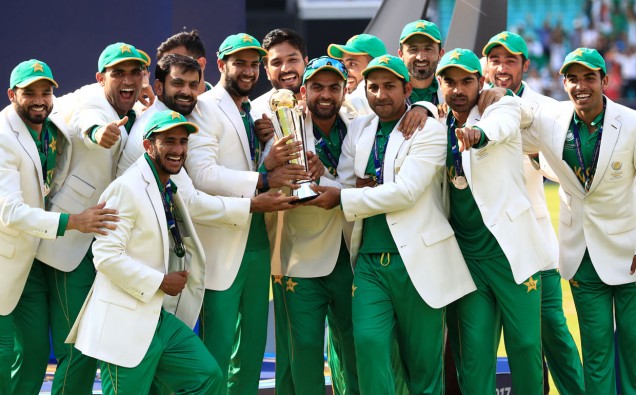It was the jaw-dropping conclusion to a tournament that had served up shock after shock. The previously unknown Hassan Ali the hero with the ball, the previously unknown Fakhar Zaman the hero with the bat, and the previously unfancied Pakistan the winners of the ICC Champions Trophy.
As akistan Captain Sarfraz Ahmed tore away, arms outstretched in delight, it almost seemed that he himself could not quite believe what was happening.
To most observers this was a triumph for the underdog in a match in which few had given Pakistan a chance. In reality it was the latest in a long line of successes Pakistan have enjoyed at South London’s historic Oval ground.
The UK’s Asian community turned the tournament into a carnival of song, dance and cricket, and the final was the apex of this, with videos of Indian and Pakistani fans dancing together throughout the day going viral.
The Oval will make history this summer by hosting its 100th Test Match when England take on South Africa on July 27th. Pakistan’s win ratio of 50% is higher than any other visiting side at the ground – it is a home away from home for the guys in green.
In the six decades since they first played at the ground, Pakistan’s relationship with the Oval has been packed with both highs and lows.
August 12th, 1954
Pakistan have always worn the underdog tag well, and, fittingly, their first visit to The Oval saw a great upset as they defeated a much-fancied England by 24 runs
Pakistan’s batsmen floundered in wet conditions, and the hero of the hour was 20-year-old Fazal Mahmood. His skilful swing bowling gave him match figures of 12/99 to stun England and delight the Pakistani supporters.
August 22nd, 1974
Neither side were able to land a knockout blow despite Pakistan’s XI containing greats including Zaheer Abbas, Imran Khan, Sarfraz Nawaz and Intikhab Alam.
Abbas struck a virtuoso 240 as Pakistan declared on 600-7, with England eventually bowled out for 545 in large part thanks to the brilliance of Intikhab, who took 5 wickets. The match and series ended up drawn.
August 6th, 1987
An imperious batting display saw Pakistan compile one of their highest ever test totals as they batted for 15 hours to reach 708 – the second highest test total ever posted at the Oval. Javed Miandad struck 28 fours in an innings of 260 while Saleem Malik and Imran Khan also struck centuries.
The legendary Ian Botham was the recipient of particular punishment – the Pakistan batsman struck 217 runs off 52 overs of his bowling – which would have been almost enough to beat England in the Champions Trophy semi-final
August 6th, 1992
Irked by England’s narrow escape in 1987, Pakistan returned exactly five years later to demolish the home side with a 10-wicket thumping.
This was the first occasion that the Oval crowd had been treated to the dual axis of unbridled terror that was Wasim Akram and Waqar Younis, and they certainly did not disappoint. The deadly pair took 15 wickets between them in the match to condemn England to defeat, and a 2-1 series loss.
August 17th, 2006
The 2006 Oval test remains one of the most controversial moments in cricketing history. After umpire Darrell Hair accused the Pakistan team of ball-tampering, the away side refused to take to the field and the match was awarded to England.
Pakistan captain Inzamam-ul-Haq was acquitted of tampering charges with Hair subsequently banned, perhaps vindicating the team’s decision to protest. This remains the only test match in history to be forfeited.
Pakistan have since gone some way to exacting revenge, defeating England in both 2010 and 2016 to further assert their Oval dominance.
Pakistan fans will now look forward with confidence to their team’s next visit to England in the summer of 2018 and hoping for a chance to play again at the Oval. They will find change is afoot at this iconic cricketing venue, which can boast a sporting heritage dating back to the nineteenth century, but is now expanding to become a 40,000 capacity stadium, easily the biggest in England.

























